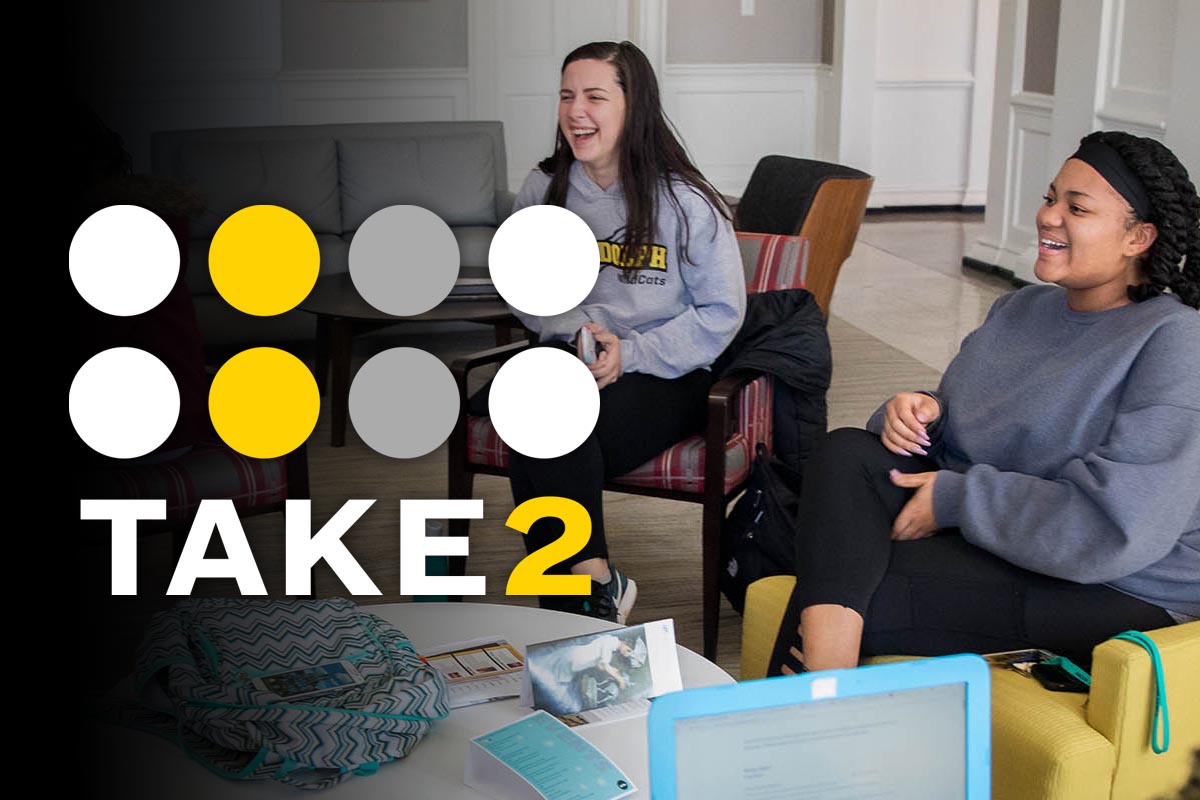New marine science major opens world of opportunities for students

Getting out of the classroom and into the world is a hallmark of the Randolph experience—something students saw first-hand over the last year in the College’s new marine science program.
In the fall, they visited the Eastern Shore. And in February, they took a trip to Virginia Beach that included a whale-watching excursion.
“I was talking to a colleague who told me that she still has a picture of herself from one of her first field experiences in college,” said Sarah Sojka, a professor of environmental studies and physics, who is leading the marine science program. “Every time she looks at the picture, she remembers how proud she was to be collecting real data that day. I want to give our students that same feeling.”
During their fall Eastern Shore trip, students assisted scientists at the University of Virginia’s Coastal Research Center with water quality monitoring. It was a chance for them to experience both field and lab work alongside working scientists.
“There are so many great educational opportunities in our area, and we want to give students opportunities to explore them,” Sojka said. “I always tell students they don’t have to be a field scientist to be a marine scientist, but I want them to know before graduation where they fit into that world.”
In February, Sojka and professor Karin Warren took students to the Virginia Aquarium and Marine Science Center in Virginia Beach. They toured the aquarium, seeing aquatic life including sharks, sea turtles, and rays, and went out on the ocean in search of whales.
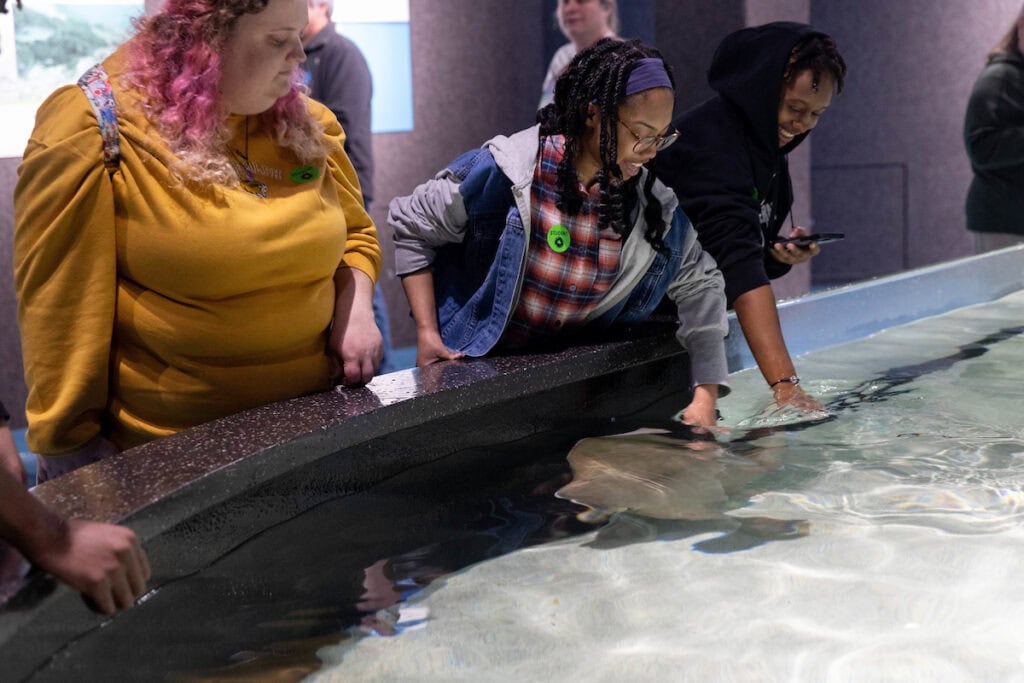
“I’ve never seen a whale up close,” said marine science major Sydney Preas ’26. “Having opportunities like that as part of my education—experiencing and seeing those things in real life versus just listening about them in class—was incredible.”
The College began offering the major this fall, and it’s one of the only undergraduate programs of its kind in Virginia.
For Preas, pursuing her passion for the ocean in Virginia, not far from where she grew up, was a unique opportunity she couldn’t pass up.
“Marine science has been something I’ve been interested in since I was little, but I was always like, ‘I’m in Central Virginia. That’s kind of not possible,’” said Preas, who grew up in Altavista and transferred to Randolph this fall. “So I settled for other degrees. But then Randolph put this out there.”
CJ Bundy ’26 has a similar story.
“Reading the curriculum for this new major is the reason why I’m here,” she said. “The professors have already started to prepare me for the future with actual fieldwork and research I can put on my resume.”

The major is an interdisciplinary marine science program, a study of the world’s oceans and marine life that includes marine biology, marine and coastal ecosystems, oceanography, ocean-atmosphere dynamics, and climate change.
The curriculum challenges students to look at all of the physics and chemistry that shape life in the ocean. Students have plenty of opportunities for hands-on experience with summer and semester fieldwork, as well as off-campus and study-away options and class-based activities such as analyzing water and sand samples.
“One of the things we work really hard on with our students is helping them understand where in this big realm of opportunity they want to fit when they graduate,” Sojka said. “We designed our program so that if life takes them inland later on, students have a really strong scientific background they could take to other aquatic systems or even other terrestrial systems because they understand a lot about ecology and geology, chemistry, and atmospheric science. They will have a great education that sets them up for a variety of careers.”
The curriculum also includes special topics courses that will vary from year to year. Sojka taught a marine heat waves course during Session 3. Other offerings will be tailored to student interest or current events, but related to themes in marine science, marine ecology, coastal systems, and/or oceanography.
“One of the fun things about actually not being immediately on the ocean is we’ve been a little bit creative about how we engage students with the ocean,” Sojka said. “We obviously take trips out to do marine science work, but we’ve also brought some virtual reality into our classrooms. And while that sounds possibly a little odd, if you think about it, a lot of our exploration of the ocean is through unmanned autonomous robots and vehicles and things like that. Virtual reality can replicate that pretty well.”

Marine science is an important field. Oceans are a source of food and oxygen, generating 50 percent of the oxygen we need to breathe. They also absorb carbon dioxide emissions, a vital buffer against climate change while, at the same time, they too experience negative impacts because of both climate change and pollution.
“There’s so much about our oceans we don’t know, and there are so many threats to them,” Sojka said. “It’s this combination of all these reasons to learn more about the environment.”
The next generation of scientists will play a vital role in understanding and sharing that knowledge.
“One of the things we do exceptionally well at Randolph is train scientists who are really good critical thinkers and communicators,” Sojka said. “And if we don’t have people who can communicate the science, then it doesn’t have as much value. We need people who are able to tell the story of what we’re learning about our oceans.”


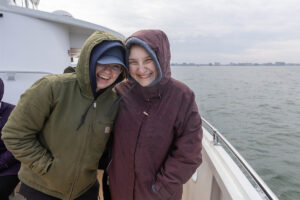
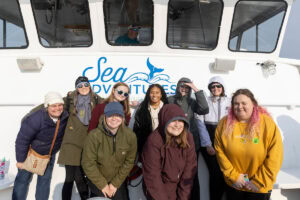

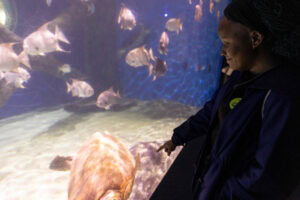


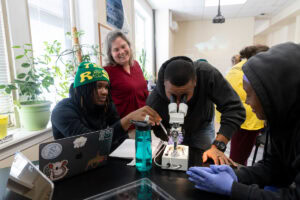

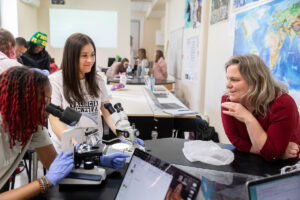

This story appears in the Spring 2024 edition of Randolph College’s magazine, Vita Abundantior.
Tags: marine science, Science Matters, Vita Spring 2024